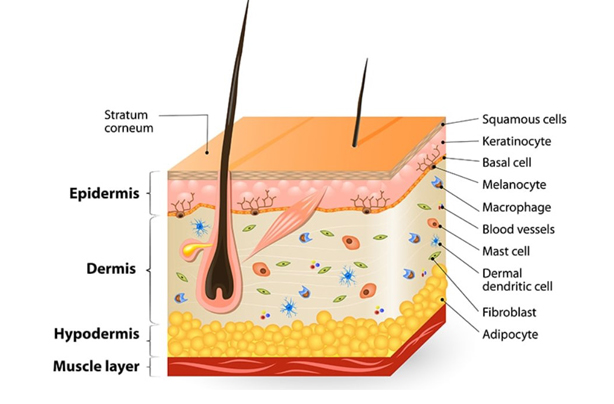Melanoma And Non-Melanoma: The 2 Types Of Skin Cancer One Should Be Aware Of
Skin cancer is the fastest-growing cancer variant. Every year over 600,000 Australias are diagnosed with skin cancer. Out of which, over 1,500 succumb to the incurable complexities of the epidemic. Australia is among the top-most countries at the highest risk of skin cancer.
A part of this vulnerability could be attributed to Australia’s over-exposure to UV rays, given the country’s proximity to the South Pole. These UV rays are the most potent causes of Skin Cancer. Other factors such as applying toxic/radioactive material on the skin, tanning booths, lifestyle mismanagement, and genetic mutations could further increase the risk of skin cancer. However, not all skin cancer types are fatal.
Skin Cancer can be broadly categories as Melanoma and Non-Melanoma.
We will first discuss Non-melanoma.
Non-Melanoma skin cancer is found in the surface layers of the skin. Depending upon the layer of the skin it develops in or the specific cell it is rooted in, it can be further categorised into different sub-categories. The most common forms of Non-Melanoma are Basal Cell Carcinoma and Squamous Cell Carcinoma.

As the name suggests, Basal cell Carcinoma affects the Basal Cells of Skin, which are responsible for the structure of the skin and pigmentation; whereas the Squamous Cell Carcinoma affects the Squamous skin cells, which comprise the topmost epidermal layer of the skin and thus, are the most commonly affected skin cells. Basal cells are the last level of the skin’s surface.
Basal Cell Carcinoma can be characterised by a shiny bump or a pimple that wouldn’t go away on its own and continues to grow abnormally. The affected tissues may also bleed. However, basal cell carcinoma is the least threatening of them all and can be removed via surgery. We suggest you only go for a professional’s help when it comes to treating skin cancer. A small error could lead to bigger troubles; to avoid that and get a thorough checkup and clean treatment, click here!
Squamous Cell Carcinoma is characterised by irregular and ill-defined moles or patches on the skin, which may get darker as they evolve into a larger size. If diagnosed at an early stage, squamous cell carcinoma’s treatment is as easy as that of Basal cells. However, squamous cells comprise the ling of all our delicate organs, beyond the skin as well. Thus, an affected or mutated squamous cell can grow rapidly, and if it goes unnoticed or unexcised, it can also affect other organs with new cancer developments. Thus, squamous cell carcinoma can go both ways.
However, the most dangerous of them all is Melanoma. Melanoma gets its name from Melanocytes, the skin cells it affects and finds its roots in. These skin cells are responsible for generating melanin, the pigment that renders our skin colour. So, the foremost signs of Melanoma include darker skin tone in some areas and moles. These melanomas moles go on to have irregular edges, texture, and they evolve into abrupt shapes with huge diameters.
Since melanoma doesn’t affect the surface layers, unlike Non-Melanoma, it can be tricky to spot its first signs and symptoms. Most of the time, it is too late when a patient is diagnosed with Melanoma! Melanoma, once it has crossed the Stage 3 (the stage of affecting other organs and cells), is hard to operate, and can invade bones leading to bone cancer as well.
Although Melanoma is the rarest skin cancer type, the disease has a high fatality rate. A patient should be careful and vigilant on what is happening with their skin. Regular checkups of your skin, done thoroughly with the usage of mirrors to get a good look at the body parts you otherwise can’t see, is necessary.
